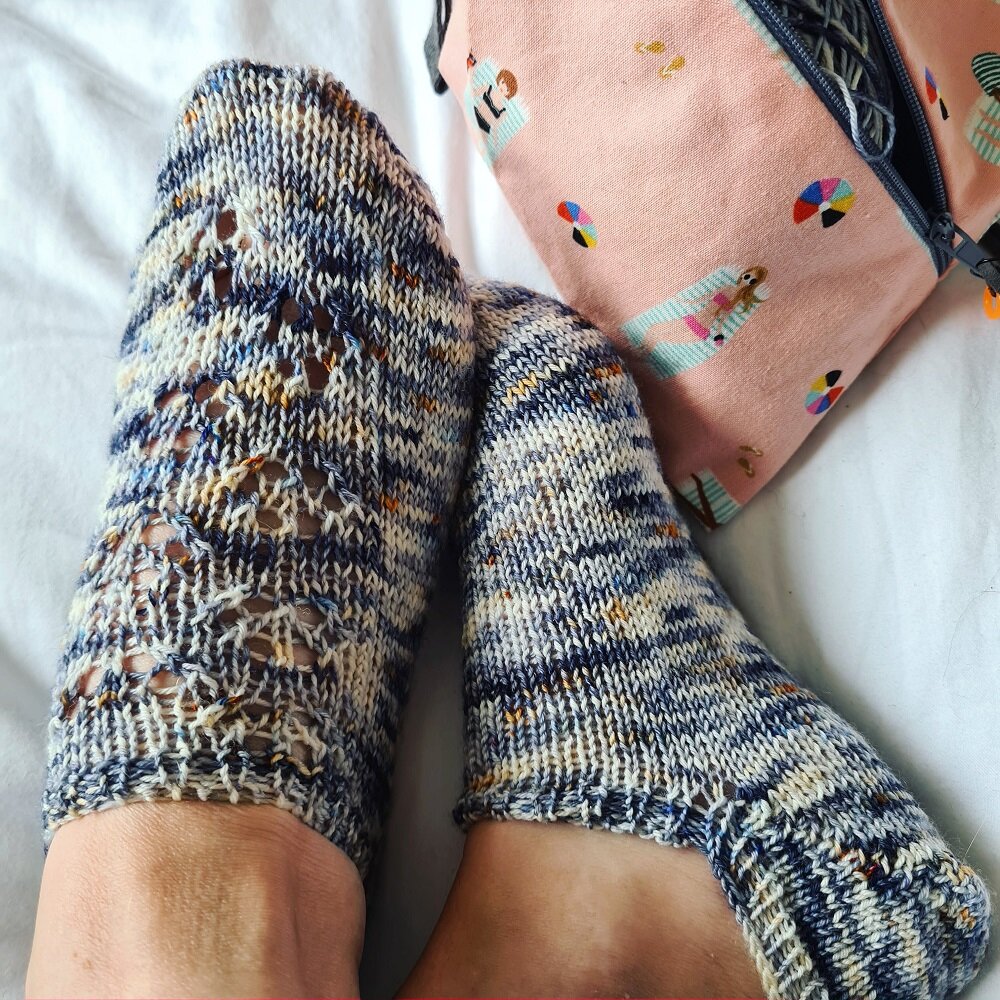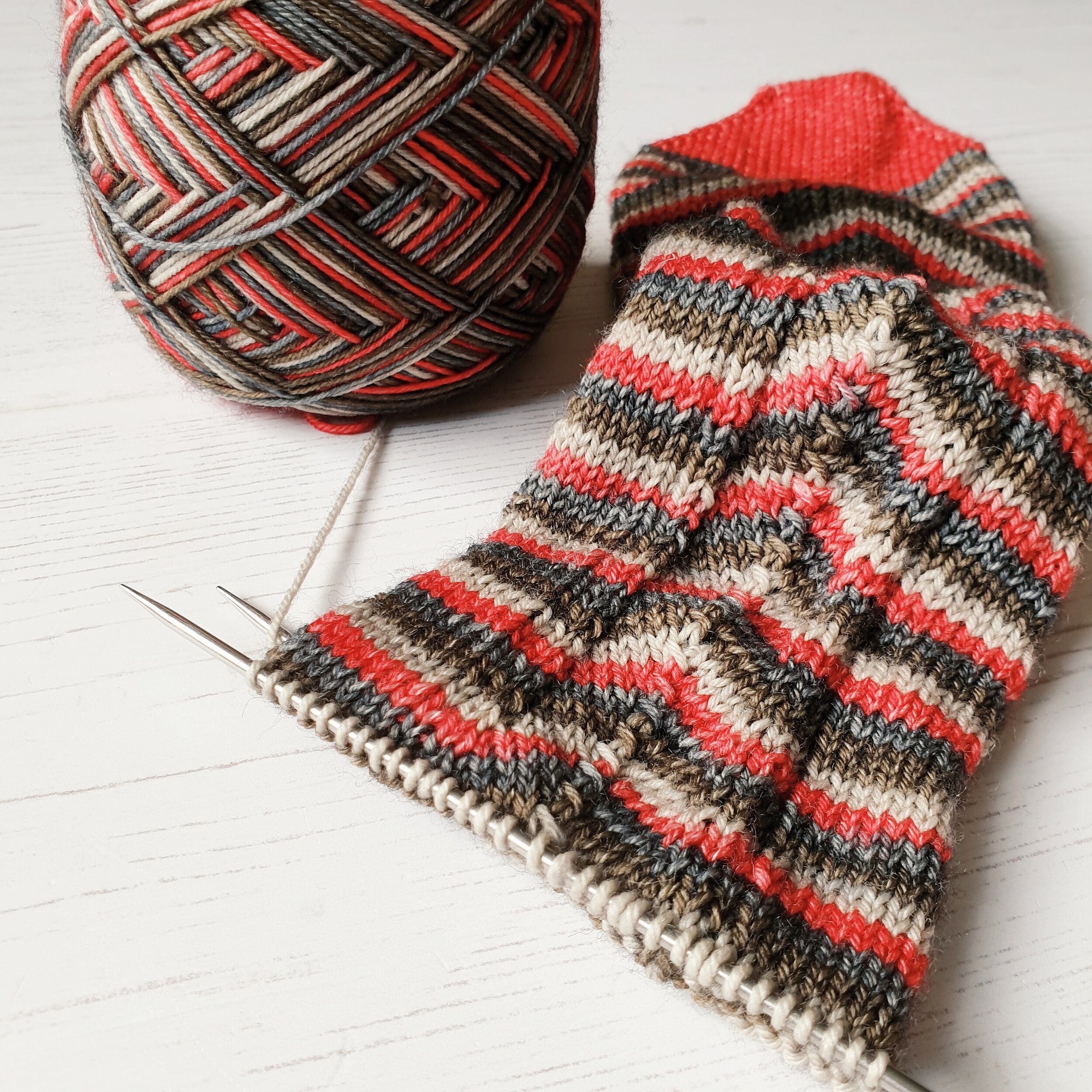Ta - da! Self stripe socks are just so satisfying and with an afterthought heel they are doubly so. These socks are knitted from a Uneek sock yarn kit in the most fabulous brightly coloured stripes - they very definition of addictive knitting as you just want to race through to the next magical colour change.
Have you worked an afterthought heel before? There are a number of advantages to this most impressive of heels:
1. No need to try on until the tube is completed - ideal for travel. No one wants to be whipping off their shoes in public to try on a sock WIP after all.
2. It doesn't interrupt the flow of the stripe.
3. You can get the heel exactly where you want
4. It always looks impressive when you take scissors to the yarn
5. It’s a great opportunity to play with colour and use a contrast yarn. Or to eke out a 50g sock skein by adding contrast heels and toes.
If the idea of actually cutting your knitting is faintly terrifying, let me offer a few words of reassurance. It really isn’t as scary as you might think and with a few simple steps it’s even fun. I have a step by step tutorial for you if you want to have a try - just tap the button below.







